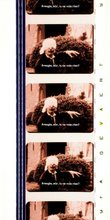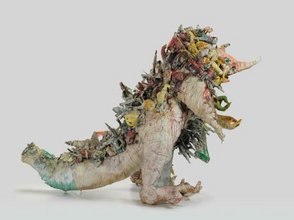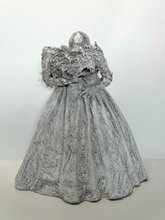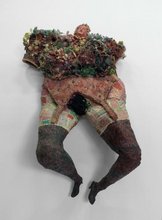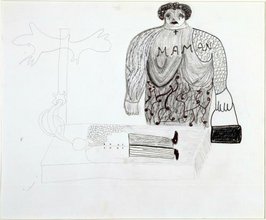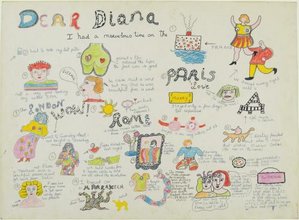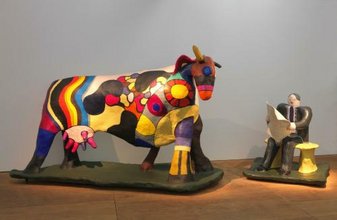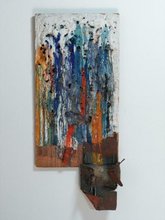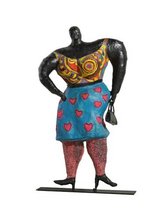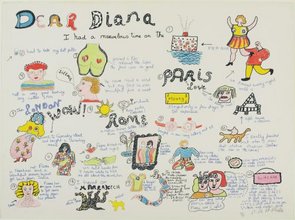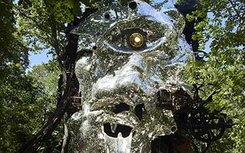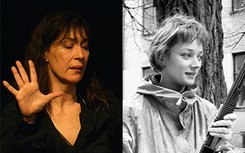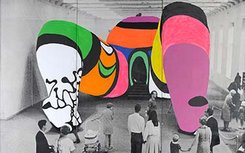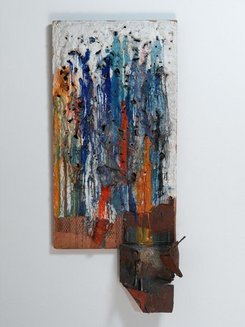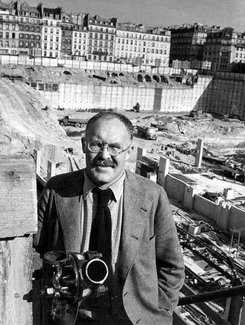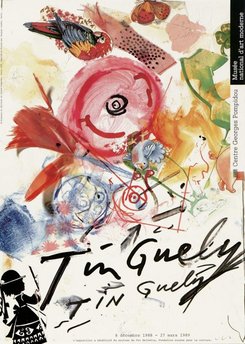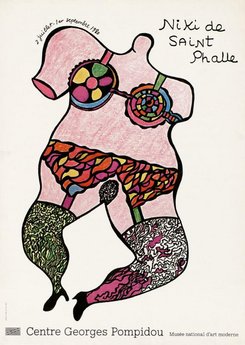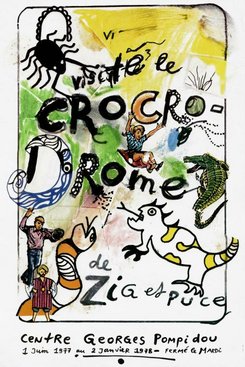Artist/personality
Niki de Saint Phalle
Sculpteur
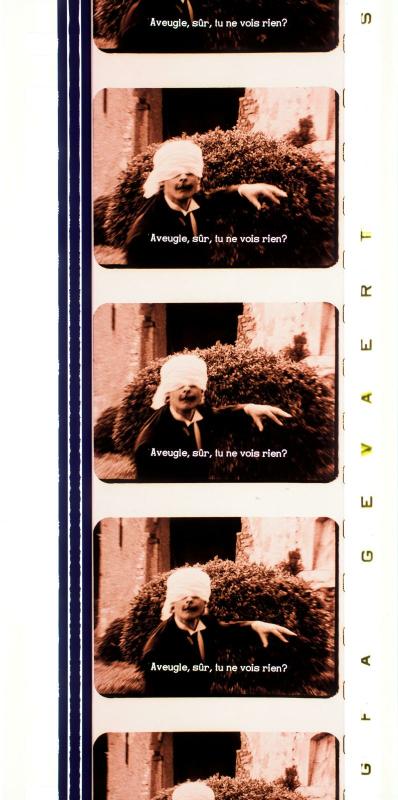
Niki de Saint Phalle
Sculpteur
Nationalité française
Birth: 1930, Neuilly-sur-Seine (Seine)
Death: 2002, San Diego (Californie, États-Unis)
© Niki Charitable Art Foundation / Adagp, Paris
Her/his artworks
Biography
Niki de Saint Phalle was born in 1930 in Neuilly-sur-Seine to a Franco-American family of aristocrats, and grew up between the family châteaux and bourgeois New York. Exasperated by a troubled family climate, she left her family at a young age and married writer Harry Mathews, with whom she moved to France in 1952. The following year, she sunk into a deep depression and discovered the life-saving power of artistic practice.
From the late 1950s onwards, Saint Phalle started to assemble objects on the surface of paintings, thus joining the practice of the New Realists and New Dada. At this time, she also met artists like Constantin Brancusi, Eva Aeppli and Jean Tinguely - with whom she would share her life a few years later. In 1960, she separated from her husband to devote herself entirely to her art.
In 1961, Saint Phalle created her first Tirs (Shots). Sometimes with the participation of the public, she used a rifle to shoot bags of paint and various objects attached to a medium and covered with plaster and white paint. Destructive violence therefore became the source of the work. At the same time, Saint Phalle developed a sculptural practice in which women were the central subject, representing Mariées (Brides), Accouchements (Childbirths), Prostituées (Prostitutes), Déesses (Goddesses) and Sorcières (Witches), all archetypes of roles assigned to women. She then created her first Nanas, women with generous curves created in multiple versions. The first ones were made from papier mâché and fabric, such as Crucifixion, then she started to use painted polyester, a technique which allowed for brighter polychromy.
In 1966, Niki’s work took on a monumental scale. She created Hon ("she" in Swedish) for the Moderna Museet de Stockholm: a 28-metre long Nana with her legs spread, welcoming visitors through her vagina. Inside, multiple rooms housed works by Per Olof Ultvedt and Jean Tinguely. From 1978 to 1998, in Tuscany, she devoted herself to creating her masterpiece, the Jardin des Tarots. This colossal project, featuring 22 visitable sculptures, was for the artist "a dialogue between sculpture and nature. A place to dream. A garden of joy and imagination". Alongside this work, her monumental pieces spread all over the world, including Fontaine Stravinsky (Stravinsky Fountain, 1983) in Paris and Fontaine de Château-Chinon (Château-Chinon Fountain, 1988), both made with Jean Tinguely, and Arbre aux Serpents (Tree of Snakes, 1992) in Angers.
On her doctor’s advice, she left Paris for California to ease her pulmonary illnesses caused by the use of resins and polyester. In 1994, she published Mon secret (My Secret), a letter to her daughter in which she revealed the incest she experienced at the age of 11, shedding new light on her body of work. In 1998, she created the series Black Heroes, representing figures from Afro-American culture. Niki de Saint Phalle passed away in San Diego in 2002 before completing Queen Califia’s Magic Circle, a sculpture park which opened posthumously the following year.

